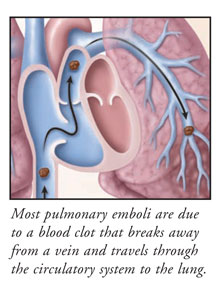Pulmonary embolism
A pulmonary embolism PE is a blood clot in the lung that has dislodged from a vein and travels through the bloodsream. With a diverse range of clinical presentations from asymptomatic to.
Pulmonary embolism PE is a common and potentially life threatening condition that doctors categorize as acute subacute or chronic.
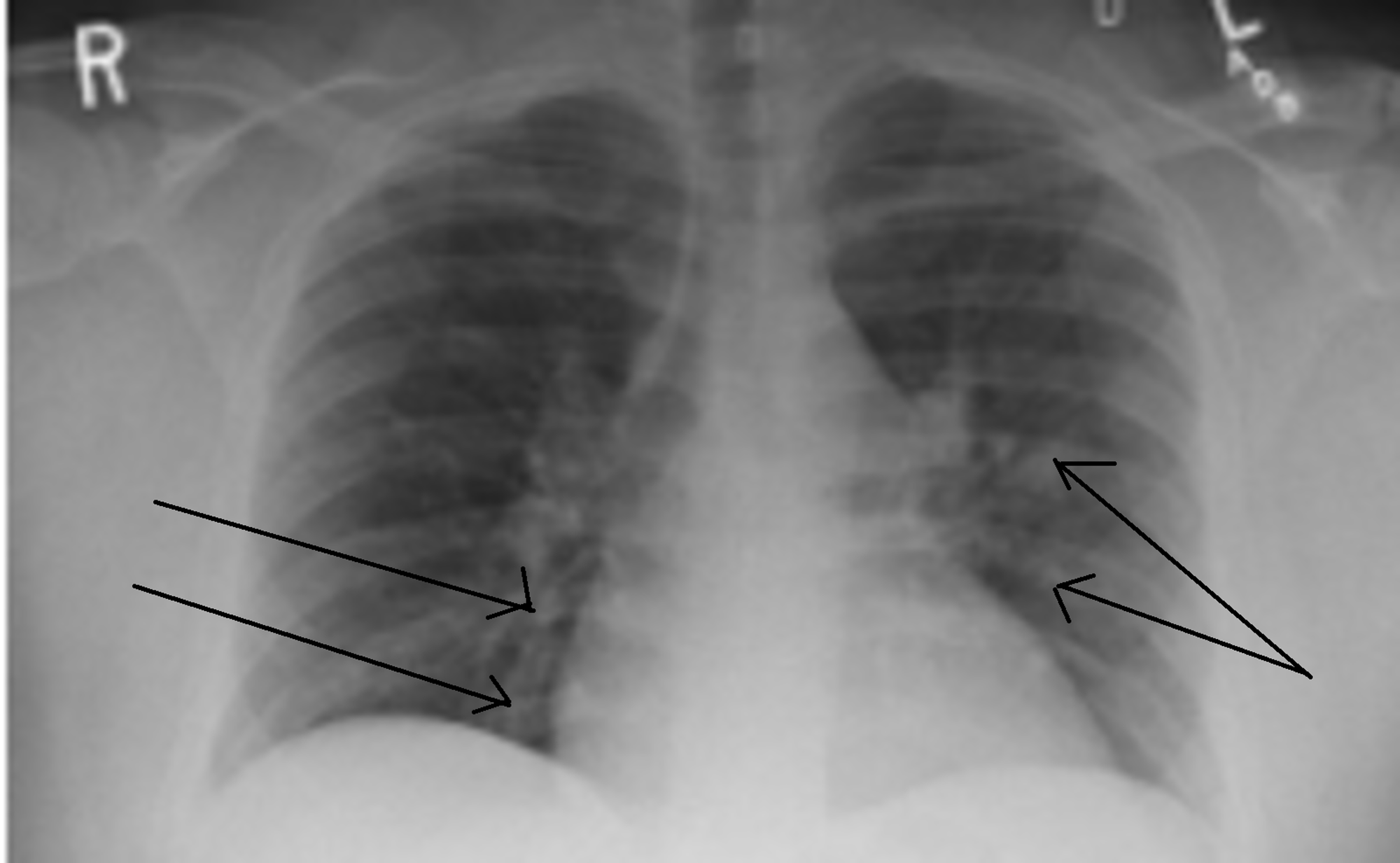
. The piece of clot. A pulmonary embolism often happens when part of the blood clot dislodges itself from your leg and travels up to your lungs causing a blockage. Deep vein thrombosis can increase a.
Its serious and can be life-threatening. Physicians have a low threshold to test for pulmonary embolism. The score is simple to use and provides clear cutoffs for the predicted probability of pulmonary embolism.
A pulmonary embolism occurs when a blood clot that is formed in a deep vein of the body deep vein thrombosis breaks loose and travels through the vessels to the lungs. But the good news is that if it. A pulmonary embolism most often starts in your legs in one of the veins that brings blood to your heart and lungs.
These embolisms affect an estimated 1 in 1000 people in the US. A pulmonary embolism is a blockage in the pulmonary artery which supplies blood to the lungs. Authors Susan R Kahn 1 Kerstin de.
Pulmonary embolism PE is when one of the arteries in the lungs gets blocked by a blood clot. Pulmonary embolism is a common diagnosis and can be associated with recurrent venous thromboembolism bleeding due to anticoagulant therapy. Pulmonary embolism PE is a common and potentially deadly form of venous thromboembolic disease.
Making sure that blood flows freely can help prevent another blood clot. There are measures you can take to lower. Pulmonary embolism PE is responsible for approximately 100000 to 200000 deaths in the United States each year.
The score aids in. Pulmonary Embolism N Engl J Med. In most cases the clot travels from the leg or another part of the body.
It is the third most common cause of cardiovascular death and is.
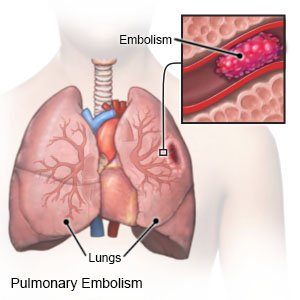
Pulmonary Embolism What You Need To Know

Acute Pulmonary Embolism Condition Ut Southwestern Medical Center

Pulmonary Embolism Ecg Findings And What They Mean

A Lesson From A Rare Cause Of Pulmonary Embolism Respiratory Care
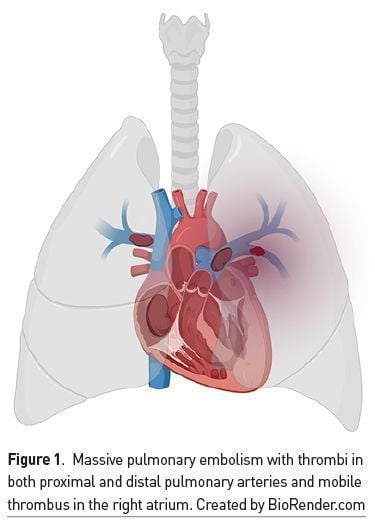
Management Of Pulmonary Embolism In The Intensive Care Unit Healthmanagement Org

Pulmonary Embolism Disease With Causes And Nursing Intervention

Multidisciplinary Pulmonary Embolism Response Teams Circulation

Pulmonary Embolism Emergency Medicine Cases
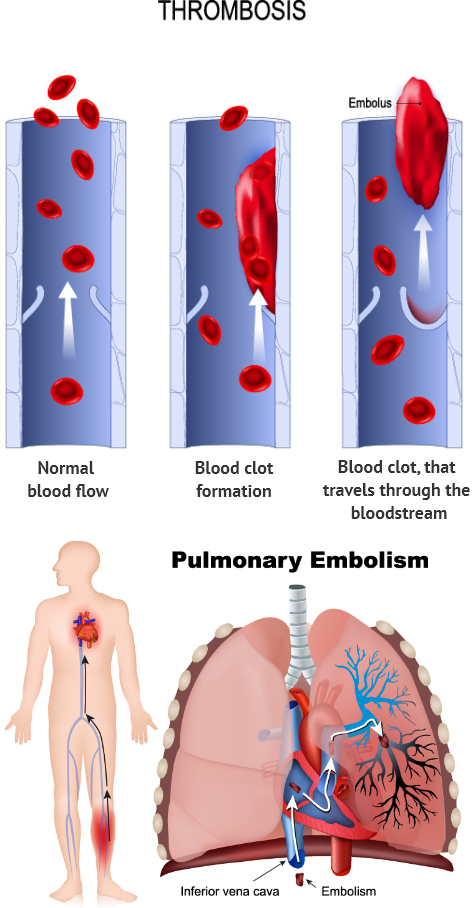
Deep Vein Thrombosis Pulmonary Embolism Elite Cardiovascular Group

Pulmonary Embolism As The Presenting Feature In A Cytomegalovirus Positive Immunocompromised Patient Consultant360

Saddle Pulmonary Embolism Causes Symptoms And Treatments

Pulmonary Embolism Surveillance Is Key American Nurse

Prevalence Of Pulmonary Embolism In Patients With Syncope Journal Of The American College Of Cardiology

Prevention Of Dvt And Pulmonary Embolism Avis Hospitals
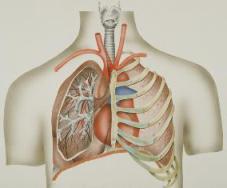
Pulmonary Embolism Symptoms Causes Treatments
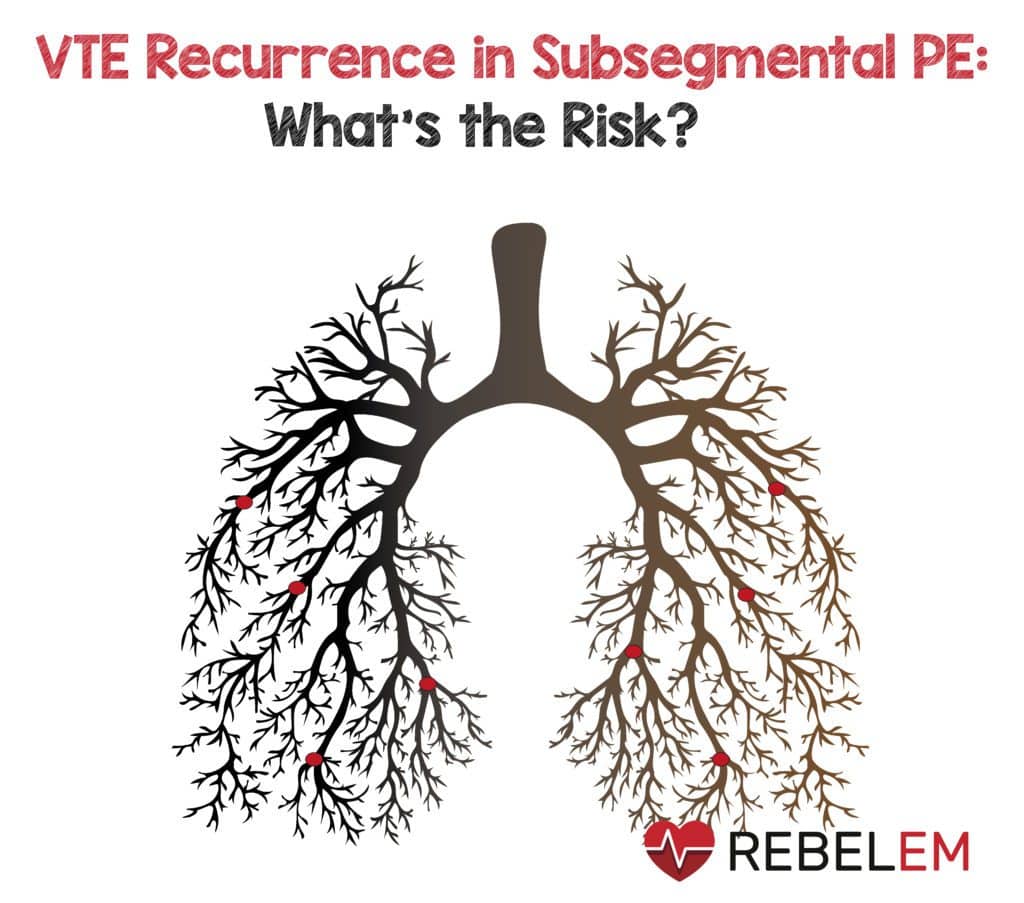
Pulmonary Embolism Archives Rebel Em Emergency Medicine Blog

Diagnostic Algorithm For Patients With Suspected Pulmonary Embolism Download Scientific Diagram
/pulmonary_embolus_symptoms1-5ae1f414a474be00366ff6ae-a99bdb7a4e074568924d73da77ede765.png)
Coping With Pulmonary Embolism

Pulmonary Embolism Explained Clearly Risk Factors Pathophysiology Dvt Treatment Youtube
